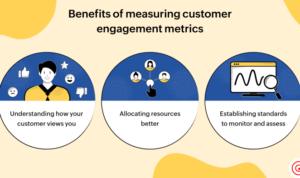Creating an Affiliate Marketing Strategy sets the stage for maximizing digital marketing potential through partnerships and strategic planning. Dive into the world of affiliate marketing and discover the key elements to craft a successful strategy.
From defining affiliate marketing to setting clear goals and identifying target audiences, this comprehensive guide will equip you with the tools needed to thrive in the competitive online landscape.
Introduction to Affiliate Marketing Strategy: Creating An Affiliate Marketing Strategy

Affiliate marketing is a popular digital marketing strategy where businesses pay individuals or other companies (affiliates) a commission for driving traffic or sales to their website through the affiliate’s marketing efforts. It is a cost-effective way for companies to increase sales, brand awareness, and customer loyalty.
Basic Concept of an Affiliate Marketing Strategy
An affiliate marketing strategy involves creating partnerships with affiliates who promote your products or services in exchange for a commission on sales or leads generated through their marketing efforts. This strategy typically includes setting commission rates, providing affiliate links and marketing materials, tracking performance, and optimizing campaigns for maximum results.
Benefits of Having a Well-Thought-Out Affiliate Marketing Strategy
- Increased brand visibility and reach: By partnering with affiliates, you can tap into their existing audience and reach new customers who may not have discovered your brand otherwise.
- Cost-effective marketing: You only pay affiliates when they successfully drive a desired action, such as a sale or lead, making it a cost-effective way to market your products or services.
- Performance-based results: Affiliate marketing allows you to track the performance of your campaigns in real-time, enabling you to optimize and improve your strategy for better results.
- Builds brand credibility: When reputable affiliates promote your products or services, it helps build trust and credibility with their audience, leading to higher conversion rates.
Setting Goals for Your Affiliate Marketing Strategy
Setting clear and achievable goals is crucial for the success of any affiliate marketing strategy. These goals provide a roadmap for your efforts, helping you stay focused and measure your progress effectively.
Examples of Specific Goals
- Increase website traffic: By setting a goal to drive a certain amount of traffic to your website through affiliate marketing efforts, you can measure the effectiveness of your campaigns.
- Boost sales conversion rates: Setting a goal to increase the percentage of visitors who make a purchase can help you optimize your affiliate marketing strategies for better results.
- Expand brand awareness: A goal to reach a wider audience and increase brand recognition through affiliate partnerships can help grow your business presence.
- Generate leads: Setting a goal to capture a specific number of leads through affiliate marketing can help fuel your sales funnel and drive revenue.
Driving Overall Success
Setting and achieving these goals can drive the overall success of your affiliate marketing program by providing a clear direction for your efforts. By tracking your progress towards these goals, you can make data-driven decisions to optimize your strategies, allocate resources effectively, and maximize the return on investment from your affiliate partnerships. Ultimately, setting specific and measurable goals for your affiliate marketing strategy can help you stay on track and achieve tangible results.
Identifying Your Target Audience
Identifying your target audience is a crucial step in affiliate marketing as it helps you tailor your strategies to meet the specific needs and preferences of the people you are trying to reach. By understanding your target audience, you can create content that resonates with them, choose the right products to promote, and optimize your marketing efforts for better results.
The Process of Identifying and Understanding Your Target Audience
- Conduct market research to gather information about your target audience’s demographics, interests, and behaviors.
- Use analytics tools to track website visitors and analyze their interactions with your content.
- Engage with your audience through surveys, polls, and social media to gather feedback and insights.
How Knowing Your Target Audience Can Help Tailor Your Affiliate Marketing Strategy
- Personalize your content to match the preferences and interests of your target audience, increasing engagement and conversions.
- Select affiliate products that align with your audience’s needs and preferences, leading to higher conversion rates.
- Optimize your marketing channels based on where your target audience spends their time online, improving reach and visibility.
The Significance of Creating Buyer Personas in Targeting the Right Audience
- Developing buyer personas helps you visualize and understand your target audience on a deeper level, allowing for more targeted and effective marketing strategies.
- Buyer personas help you identify pain points, motivations, and decision-making factors of your audience, enabling you to address their needs more effectively.
- By creating detailed buyer personas, you can tailor your content, promotions, and recommendations to specific segments of your audience, increasing the likelihood of conversion.
Selecting the Right Affiliate Programs
When it comes to choosing the right affiliate programs for your business, it’s crucial to consider a few key factors that can make a significant impact on your success in affiliate marketing. Aligning with reputable and relevant affiliate programs is essential to building trust with your audience and maximizing your earning potential.
Criteria for Selecting the Most Suitable Affiliate Programs, Creating an Affiliate Marketing Strategy
- Relevance: Look for affiliate programs that align with your niche and target audience to ensure that the products or services you promote are of interest to your followers.
- Commission Structure: Consider the commission rates offered by different affiliate programs and choose those that provide competitive payouts for your efforts.
- Product Quality: It’s important to promote products or services that are high-quality and reputable to maintain your credibility with your audience.
- Cookie Duration: Check the cookie duration of affiliate programs as it determines how long you can earn commissions on a referral’s purchase.
Tips on Researching and Choosing the Best Affiliate Programs
- Read Reviews: Look for reviews and feedback from other affiliates to gauge the reputation and performance of different affiliate programs.
- Check Earnings Potential: Research the earning potential of various affiliate programs to ensure that your efforts will be rewarded appropriately.
- Consider Support: Choose affiliate programs that offer good support and resources to help you succeed in promoting their products or services.
- Test and Monitor: Don’t be afraid to test out different affiliate programs to see which ones resonate best with your audience, and monitor your results to make informed decisions.
Crafting Compelling Content for Affiliates

Creating engaging content that resonates with both affiliates and their audiences is crucial for a successful affiliate marketing strategy. Compelling content not only attracts potential customers but also helps in driving conversions and sales. Let’s explore some strategies and examples to craft compelling content for affiliates.
Utilizing Techniques
Utilizing search engine optimization () techniques in your content can help improve visibility and attract more traffic to your affiliate links. By incorporating relevant s, meta tags, and optimizing your content for search engines, you can reach a wider audience and increase the chances of conversion.
- Research and incorporate relevant s related to your affiliate products or services.
- Create high-quality, informative content that provides value to your audience.
- Optimize your content for search engines by using meta descriptions, alt tags, and internal linking.
- Regularly update and refresh your content to maintain its relevance and visibility.
By implementing techniques in your content, you can improve your search engine rankings and attract more organic traffic to your affiliate links.
Visual Content Creation
Visual content such as images, infographics, and videos can significantly enhance the engagement of your audience and drive more conversions. Visuals are more appealing and easier to consume, making them an effective tool for promoting affiliate products or services.
- Create visually appealing images and infographics that showcase the benefits of the affiliate products.
- Produce engaging videos that demonstrate the features and uses of the products in a creative way.
- Include call-to-action buttons and links within your visual content to direct viewers to the affiliate site.
Visual content is a powerful tool for capturing the attention of your audience and encouraging them to take action, leading to increased affiliate sales.
Tracking and Analyzing Performance
Tracking key performance metrics in affiliate marketing is crucial for understanding the effectiveness of your campaigns and making informed decisions to optimize your strategies. By monitoring performance data, you can identify what is working well and what areas need improvement, helping you maximize your affiliate marketing efforts.
Tools and Methods for Monitoring Performance
- Utilize analytics platforms: Tools like Google Analytics can provide valuable insights into traffic sources, conversion rates, and user behavior on your affiliate site.
- Track affiliate links: Use affiliate tracking software to monitor clicks, conversions, and commissions generated by each affiliate link to assess their performance.
- Set up conversion tracking: Implement conversion tracking pixels to measure the actions taken by users after clicking on affiliate links, such as sign-ups or purchases.
- Monitor KPIs: Keep an eye on key performance indicators (KPIs) like click-through rates, conversion rates, and average order value to gauge the success of your affiliate campaigns.
Interpreting Data and Making Decisions
- Analyze trends: Look for patterns in your performance data to identify successful strategies and areas for improvement.
- Optimize underperforming campaigns: Use performance data to pinpoint underperforming affiliate campaigns and make adjustments to improve their effectiveness.
- Experiment and test: Test different approaches based on performance data to optimize your affiliate marketing strategies and achieve better results.
- Make data-driven decisions: Use performance analysis to make informed decisions on budget allocation, affiliate partnerships, and content strategies to maximize your ROI.





